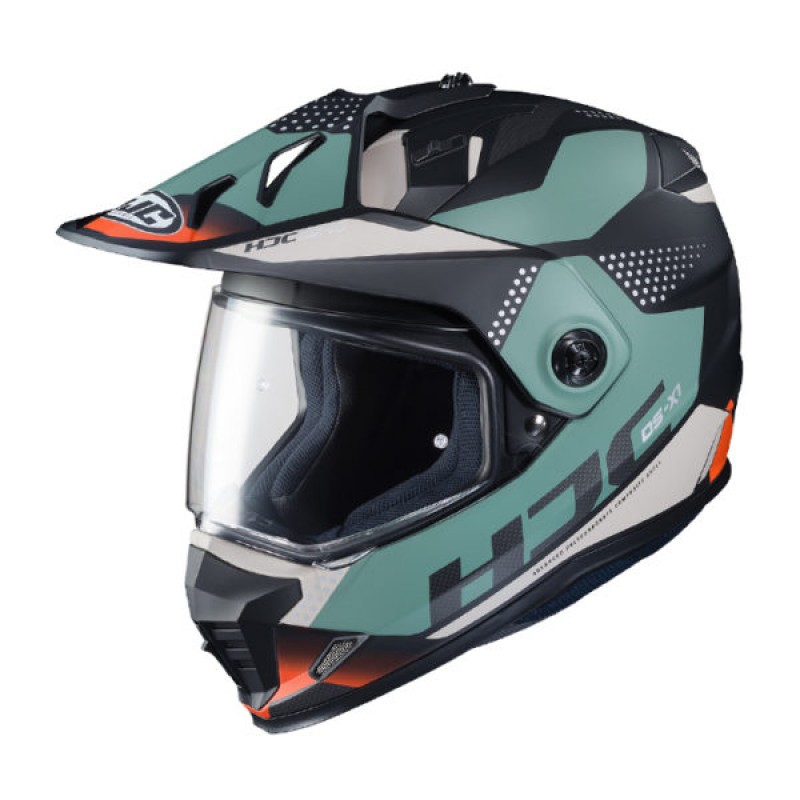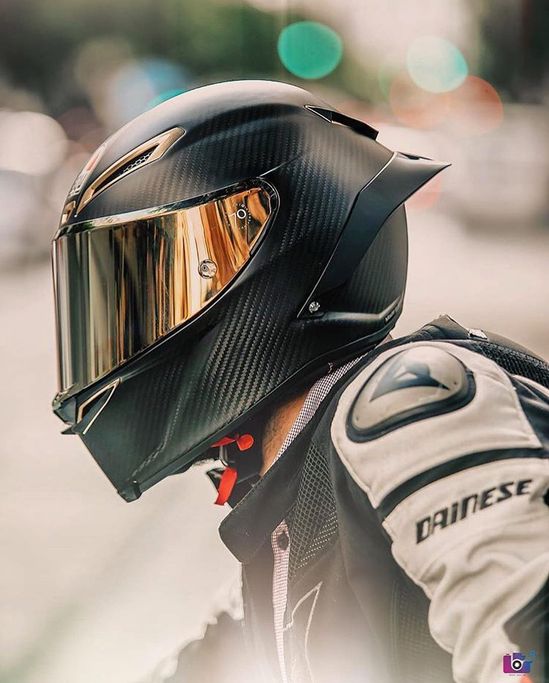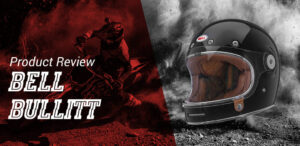There are several options to think about when selecting a dual sport helmet and full face helmet. Each helmet has a specific purpose and application region. While some helmets can serve a dual purpose, others have clear advantages. To choose which option is best for you, many individuals frequently inquire about the differences between dual sport helmet and full face.
In actuality, both dual sport helmet and full face are serious competitors in terms of safety, usability, and preferences. Despite their striking similarities, they nonetheless have some glaring differences. You will learn about the many features of these two helmets in this post. You’ll comprehend both their differences and commonalities.
Contents
- Which is better: dual sport helmet and full face helmet?
- How Safes Are Dual sport helmet And Full Face Helmet?
- The 6 Best Cat Ear Motorcycle Helmets
- Top 14 Best Bluetooth Ski Helmets For You
- Top 10 Best Welding Helmet For Workers
- The 12 Most Modern Motorcycle Helmets With Bluetooth For Riders
- Review a Classic Style Bell Bullitt Helmet With 8 Main Features
- The 12 Most Stylish Motorcycle Helmets For Women 2022
- Best Shark Modular Helmet Review- The Evo-One 2
- Shoei Glamster Helmet Review- Best Vintage Style Helmet
- Scorpion EXO R420 Review- What is The Special?
Which is better: dual sport helmet and full face helmet?
You might be debating the route to take for your motorcycle riding endeavor. Dual sport helmet and full face both offer the highest level of protection, but not all activities are suitable for them. They also outweigh one another in many applications. With that said, let’s compare dual-sport helmet and full-face in the section below.

Dual Sport Helmet
What is a dual-sport helmet?
The elements of a street bike helmet and a dirt bike helmet are combined in a dual-sport helmet. It is essentially a hybrid of full-face and off-road helmets. It has a sizable aerodynamic visor that won’t wobble open in the face of strong winds. Additionally, a dual-sport helmet is more soundproof than a dirt bike since it has a chin bar that is lower than dirt (also known as off-road) bikes.
Dual sport helmets, aside from the peak, have a bigger hole to allow for additional airflow. Most can accommodate MX goggles if desired, which is not possible on a street helmet. A dual sport helmet has a face shield just like a full face helmet, unlike a dirt bike helmet. For motorcyclists who wear prescription glasses, this is extremely practical. Compared to a pair of goggles, they tend to fog up less behind a face shield. If the face shield is closed, a dual sport helmet will be quieter than a dirt bike helmet but not as quiet as a full face helmet.
If you are not hidden by a tall windscreen, the peak will catch the wind. On the majority of contemporary adventure bikes with large touring screens, this shouldn’t be an issue. If your motorcycle lacks a significant windscreen, be sure the dual sport helmet you are considering has enough wind vents to prevent it from turning into a parachute. Due to vibration and wind rushing through the peak, dual sport helmets are also significantly noisier than street helmets.

Dual-sport helmets: are they worthwhile?
For a select group of motorcyclists, dual-sport helmets are designed. That’s because street or dirt bike riders make up the majority of motorcycle users. It fails when used as both a street helmet and a helmet for dirt bikes, which is one of the difficulties of doing double duty.
If you ride a dirt bike, you should rather choose a lighter dirt bike helmet. On the other hand, if you are a highway biker who loves to ride at high speeds, the full-face helmet may be best for you. Dual-sport, however, is the best option for any rider who frequently engages in either of the two types of riding (off-road or highway).
Why should I wear a dual-sport helmet?
An “all-rounder” helmet is another name for the dual-sport model. This is a result of its wide, aerodynamic visor, which enhances rider visibility. Additionally, the dual-sport helmet gives you access to both off-road and highway helmet capability. Therefore, the multipurpose helmet is useful for all types of motorcycle riders.
Additionally, the visor (or peak) of a dual-sport helmet serves as a reliable sunshade. In circumstances of rugged, off-road terrains, its big visor (or peak) allows space for greater ventilation.
What is a dual-sport helmet’s drawback?
Despite its benefits, the dual-sport helmet nevertheless has some glaring drawbacks. One of them is the fact that dual-sport helmets frequently become foggy in chilly, rainy, or misty environments. Additionally, dual-face helmets offer less noise insulation than their full-face equivalents.
Additionally, due to their detrimental effects on the neck and shoulder, dual-sport helmets should not be used during lengthy car trips.
Full Face Motorcycle Helmet
What is a full-face helmet?
A helmet that provides all-around protection is the full-face motorcycle helmet. It provides head and neck protection. As a result, it is regarded as the safest kind of motorcycle helmet.
No matter what kind of motorcycle you’re riding or where you are, it is a flexible option for every rider. Depending on the type of riding you’re doing, it has a variety of possibilities.
In essence, full-face helmets are made to increase head safety while riding at maximum speeds.
Sport and street motorcycles use full-face helmets. Of all the helmet varieties, they are the most aerodynamic, which makes a significant difference at highway speeds. Less wind resistance against your head is a result of the low drag coefficient. In particular, if you are not seated in front of a tall screen, this lessens the tension on your neck muscles.

Since street riders often maintain a steady speed, more air can enter the narrow vents in dual sport helmet than dual sport helmet, which provide more ventilation. A helmet that has fewer ventilation openings is also quieter and hence more comfortable. Heat is retained but inclement weather is kept out. Due to the size of the face shield (or “visor,” to some of you), the riders’ field of vision is likewise more constrained.
Fogging up may be a problem due to the limited airflow and the smaller face hole. This is worse if you ride slowly in the morning on mud, for example. And in the hours just after sunrise or just before sunset, you might have to squint to see the road ahead due to the lack of a peak (the baseball cap-like object on top). To lessen glare, some street helmets do have tinted visors.
I frequently use sunglasses underneath mine while riding. When riding with an open face shield at very low speeds in the dirt, I also wear sunglasses to keep the bugs out of my eyes.
The vents on some better helmets, like my Arai Quantum-X, are substantially superior to those on more affordable models. The vents on my old Zeus dual-sport helmet didn’t matter if they were open or closed. Nothing compares to the cold air rushing over the top of your hot head when the vents of a high-quality helmet are opened.
Do Full-Face Helmets Pay Off?
Full-face helmets are extremely adaptable and may be used for all riding styles because they offer protection wherever you ride. Additionally, its chin bar is excellent for shielding motorcyclists from the chin and lower facial injuries.
Why should I use a full-face helmet?
- It provides greater, improved protection.
- The visor is resilient to airborne debris, insects, and fog.
What are the drawbacks to wearing a full-face helmet?
- Despite not fogging, the helmet is not a good option for long rides in hotter conditions.
- It costs more to afford them.
- This helmet is hefty because it is clumsy.
- Inadequate ventilation
How Safes Are Dual sport helmet And Full Face Helmet?
The full-face road and off-road dirt bike motorcycle helmets’ qualities are combined in the dual-sport helmet. For dual sport helmet and full face comfort and protection, they are made of high-strength and incredibly lightweight materials like carbon fiber and Kevlar. A broad visor that shields the eyes from the sun and a flexible chin bar for comfort are also features of a dual-sport helmet.
Dual sport helmets have soft internal liners and washable pads. Additionally, they are aerodynamically designed to reduce wind noise while traveling on a highway. Even during a collision, the pliable shields are held in place to prevent them from flipping open.
On the other hand, the full-face helmet lacks flexible shields and a chin bar, unlike the dual sport helmet. All the parts are put together because it has a 360-degree design. Full-face helmets are renowned for their durability, strength, and weight.
The Dual Sport helmet and Full Face Helmets. However, dual sport helmet and full face helmet provide the rider with total safety and protection when the shield is closed. The effect of a crash on the face, head, and brain is reduced since they protect the front, back, and rear.
In this article, dual sport helmet and full face helmet are compared, along with two top picks from each category. You now understand that a full face helmet is a subset of a dual sport helmet. The dual sport helmet includes a flexible shield that increases rider comfort even while both provide comprehensive protection of the head, face, and ears.
I’m going to defy convention once more and suggest that you consider a full-on dirt helmet if you plan to spend a lot of time off-road and engage in all the necessary aerobic activity. For two very crucial reasons, the dual-sport option is entirely off the table for me. When you take up your bike for the fourth or fifth time, you will be quite grateful for the fact that dirt helmets are much lighter and frequently feature superior venting. Most high-end dirt helmets weigh less than three pounds and contain three to four times as many vents as the comparable street or street-based dual-sport helmets.
This is because highway speeds averaging 60 to 70 mph are what street helmet vents are designed for. Your average speed while riding single-track or trails will probably be at most in the teens or single digits.
It’s wonderful if you could have different helmets for different bikes or riding styles. But if you only need one helmet for the task, I advise you to take these factors into account and assess how it will function for the type of riding you actually perform. That will increase the likelihood that you’ll be long-term satisfied with your purchase.
Maybe you are interested: http://helmetme.com/coolest-motorcycle-helmets-in-the-world.html
VIDEO: Soure from youtube Motorcycle Adventures









